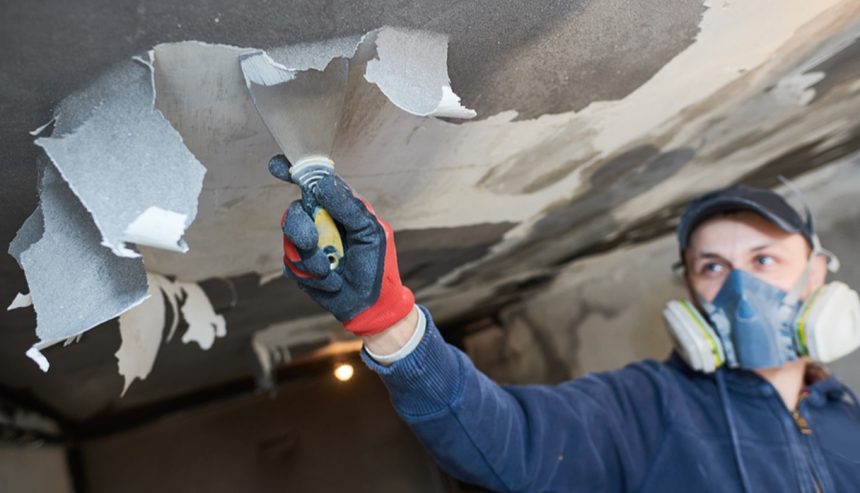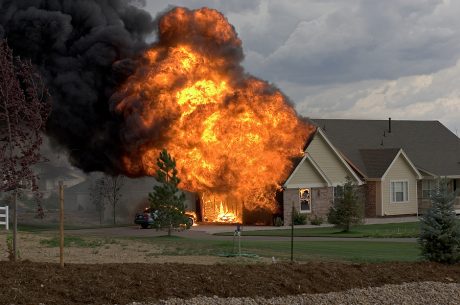Smoke damage can be a hidden yet serious problem in homes, especially after a fire. Early smoke detection is vital to prevent health issues and further deterioration of the property. Hiring trained and expert smoke/fire restoration companies like PuroClean of Muncie can make all the difference. The National Fire Protection Association (NFPA) reports that between 2016 and 2020, the United States experienced an annual average of 350,800 home structure fires. Keep reading to learn eight signs that a house has smoke damage.
1. Lingering Smoke Odor
- Persistent Smell: One of the most obvious signs of smoke damage is a lingering smoky or burnt smell that doesn’t go away, even after airing out the space. Smoke particles can embed themselves into walls, carpets, furniture, and other porous materials, making the odor hard to remove.
- Worsens with Humidity: If the smell gets stronger in damp or humid conditions, it’s a clear indication that smoke particles are trapped in materials like drywall or upholstery.
2. Discoloration and Soot Stains
- Stained Walls and Ceilings: Look for yellow, gray, or black discoloration on walls, ceilings, and other surfaces. Smoke can leave behind a residue that can stain paint, wallpaper, or ceiling tiles.
- Soot Deposits: Soot is a fine black powder that can settle on surfaces. It often appears as a dark, greasy film that can smear if touched. Common areas where soot may accumulate include vents, HVAC filters, and light fixtures.
- Blistering or Bubbling Paint: Smoke can cause paint to peel, bubble, or blister due to heat exposure and chemical reactions from smoke particles.
3. Damaged Furniture and Fabrics
- Fabric Discoloration: Upholstered furniture, curtains, and carpets can absorb smoke, resulting in discoloration or a dull, dingy appearance.
- Burn Marks: Check furniture for burn marks or heat damage, especially on items made of wood, plastic, or fabric.
4. HVAC and Ventilation Issues
- Clogged Air Filters: Smoke particles can get trapped in your HVAC system, leading to clogged air filters. If you notice a dirty filter shortly after replacing it, this could be a sign of smoke damage.
- Soot in Air Ducts: Check inside air vents and ductwork for black or gray residue. If your HVAC system was running during a fire or exposure to heavy smoke, it could have circulated soot throughout the house.
- Poor Air Quality: If you notice a decrease in indoor air quality, such as persistent respiratory irritation or coughing, it could be due to lingering smoke particles in the air.
5. Unusual Residue and Film
- Sticky or Greasy Surfaces: Smoke can leave a sticky residue on surfaces, especially from burning synthetic materials like plastics or chemicals.
- Dust-Like Residue: If you notice an unusually fine, powdery dust that returns quickly after cleaning, it could be soot.
6. Damage to Electronics and Appliances
- Malfunctioning Electronics: Smoke can corrode internal electronic components, leading to malfunctions. Watch for devices that stop working or behave erratically after smoke exposure.
- Residue on Appliance Surfaces: Appliances, especially those with ventilation (like microwaves, range hoods, or air purifiers), may accumulate a smoky film.
7. Water Damage from Firefighting Efforts
- Warped Walls or Floors: Water used to extinguish fires can lead to water damage, which may cause walls, ceilings, or floors to warp or buckle.
- Mold Growth: The combination of smoke residue and water can create an environment conducive to mold growth, especially in hidden areas like behind walls or under floors.
8. Signs in the Attic or Basement
- Smoke Stains on Insulation: Check attic insulation for discoloration or a burnt smell, indicating smoke exposure.
- Charring on Wooden Beams: Exposed wooden beams in attics or basements may show signs of charring or discoloration from smoke.
How to Confirm Smoke Damage
- Wipe Test: Run a white cloth over surfaces like walls, ceilings, or furniture. If you see black or gray residue on the cloth, it’s likely soot.
- Flashlight Test: Shine a flashlight at an angle on walls or ceilings. If you see a fine film or streaks, it could be smoke residue.
- Professional Inspection: If you suspect smoke damage but can’t see obvious signs, consider hiring a professional restoration company to conduct a thorough inspection. They can test for hidden smoke damage and assess air quality.
What to Do If You Have Smoke Damage
- Ventilate the House: Open windows and doors to increase airflow and reduce the concentration of smoke particles.
- Deep Clean: Clean all surfaces, including walls, ceilings, and floors, with a solution of water and mild detergent. For more severe cases, use specialized cleaning agents designed for smoke damage.
- Replace HVAC Filters: Change air filters frequently and consider having your ductwork professionally cleaned.
- Deodorize: Use baking soda, vinegar, or activated charcoal to absorb odors. For persistent odors, professional ozone treatments or thermal fogging may be necessary.
- Professional Restoration: For extensive smoke damage, especially if it affects structural components or electronics, it’s best to hire a restoration specialist to clean, repair, and restore your home.
Addressing smoke damage promptly can prevent long-term issues, protect your health, and maintain the value of your home. PuroClean proudly serves residential and commercial clients using our state-of-the-art tools and equipment. Our skilled and professional property restoration experts are available 24/7 to assist with smoke and fire damage restoration. Contact our Muncie, Indiana, office today at (765) 780-7322.



